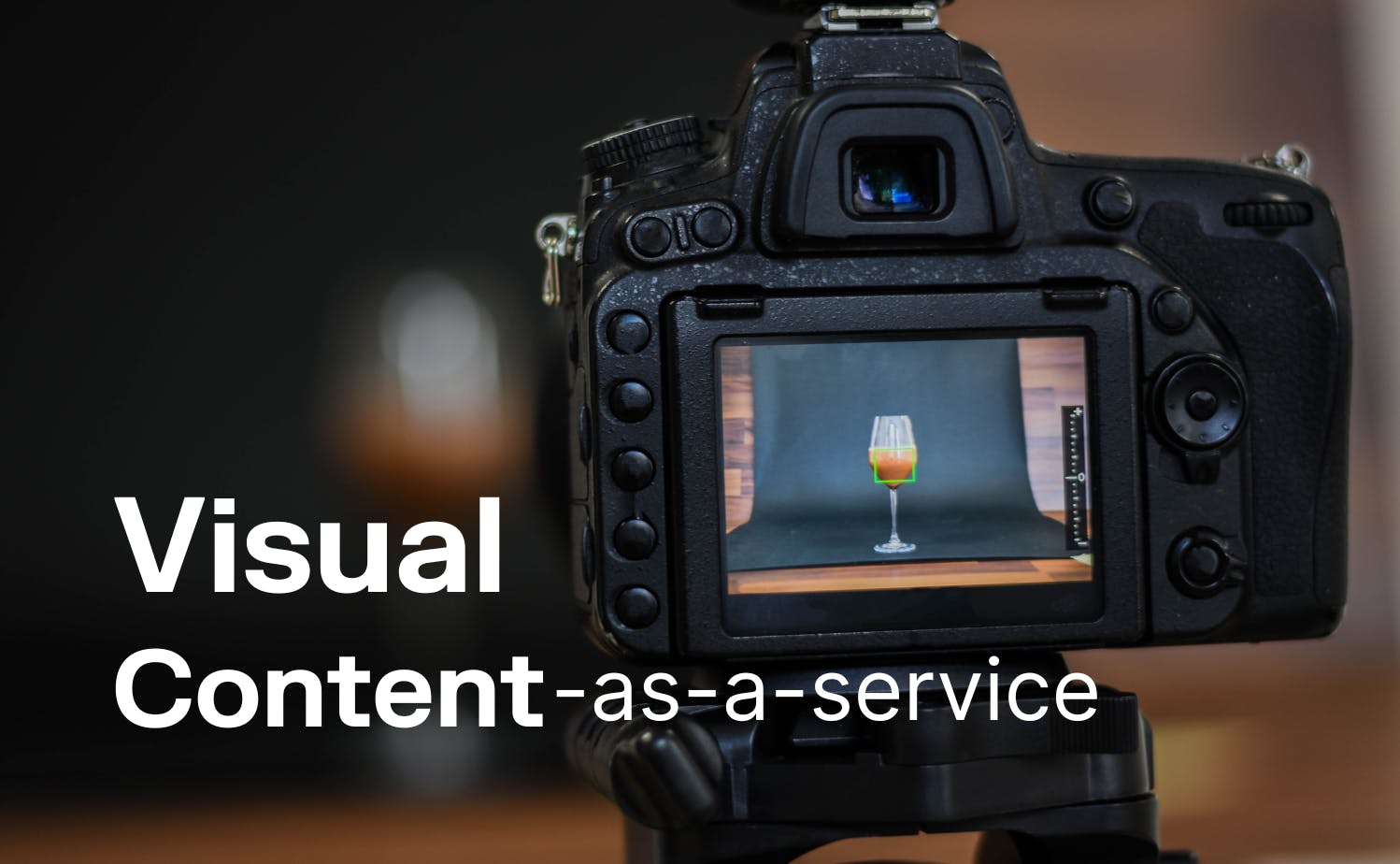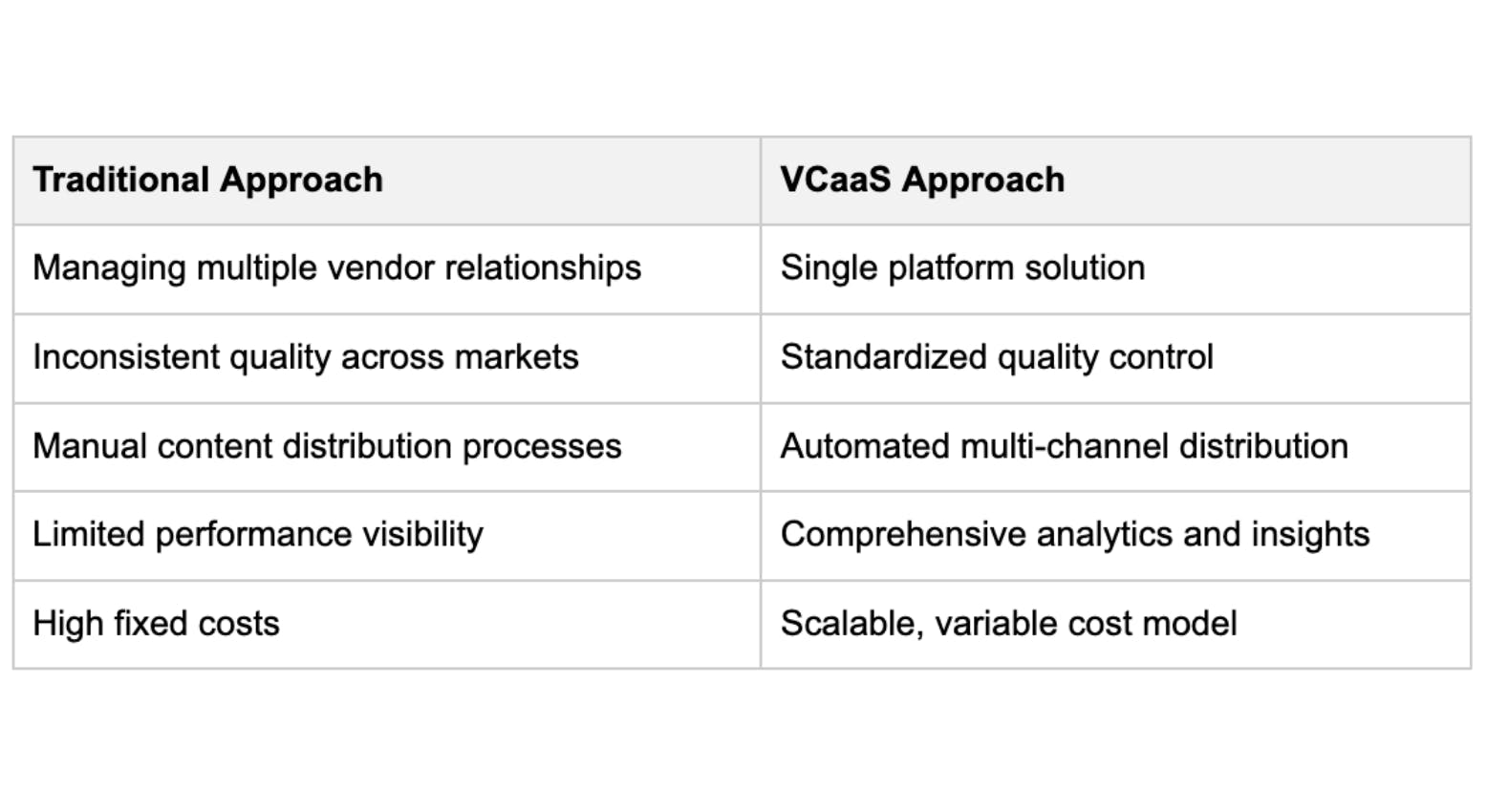
How Visual Content-as-a-Service Drives ROI for Enterprises

This article explores how Visual Content-as-a-Service (VCaaS) drives measurable return on investment for global enterprises
Visual content has become a critical asset for global enterprises seeking to differentiate themselves and drive meaningful business results. As organizations expand across markets and platforms, the need for consistent, high-quality visual assets has never been greater.
Visual Content-as-a-Service (VCaaS) has emerged as a strategic solution that helps enterprises streamline their visual content production, management, and optimization at scale.
This article explores how VCaaS drives measurable return on investment for global enterprises and why this approach is becoming essential for companies looking to maintain competitive advantage in an increasingly visual digital economy.
What is Visual Content-as-a-Service?
Visual Content-as-a-Service represents an evolution of the broader Content-as-a-Service (CaaS) model, specifically focused on visual assets. At its core, CaaS manages structured content into feeds that other applications and platforms can easily consume[1]. When applied to visual content, this approach enables enterprises to create, manage, and distribute visual assets across multiple channels and touchpoints with unprecedented efficiency.
Key Components of VCaaS
VCaaS platforms typically combine several critical elements:
- On-demand content creation through photographer networks
- AI-powered content moderation and quality control
- Automated image enhancement and optimization
- Performance analytics and insights
- Multi-channel distribution capabilities
Unlike traditional approaches to visual content production that often involve fragmented processes and disconnected systems, VCaaS provides a unified solution that addresses the entire visual content lifecycle. This comprehensive approach allows enterprises to maintain brand consistency while scaling their visual content operations globally.
The Business Case for Visual Content-as-a-Service
Increased Engagement and Conversion Rates
Visual content significantly outperforms text-only content across virtually all digital channels. Studies consistently show that high-quality visual content leads to increased engagement, better retention, and higher conversion rates[2]. For global enterprises, this translates to tangible business outcomes:
- Higher click-through rates on digital advertising
- Increased time spent on websites and digital properties
- Improved conversion rates across the customer journey
- Enhanced brand recall and recognition
Operational Efficiency and Cost Reduction
Traditional approaches to visual content production often involve significant overhead costs:

By centralizing visual content operations through a VCaaS platform, enterprises can significantly reduce operational costs while improving output quality and consistency. This efficiency gain represents a direct contribution to ROI.
How VCaaS Transforms Enterprise Visual Content Strategy
Multi-Channel Publishing and Distribution
One of the primary advantages of VCaaS is the ability to create content once and distribute it across multiple channels and campaigns. This capability represents a classic win-win situation for both marketers and developers[3]. With VCaaS, enterprises can:
- Maintain a single content repository that cleanly separates content from presentation
- Enable content creators to produce assets that work across channels
- Empower developers to implement content in channel-specific ways
- Ensure brand consistency across all customer touchpoints
Personalization at Scale
As customer expectations continue to evolve, personalization has become a critical factor in driving engagement and conversion. VCaaS platforms enable enterprises to implement sophisticated personalization strategies by delivering content dynamically based on user preferences, behaviors, and contexts[3]. This capability allows global enterprises to:
- Tailor visual content to specific audience segments
- Adapt imagery to regional preferences and cultural contexts
- Test different visual approaches to optimize performance
- Deliver contextually relevant experiences across the customer journey
Integration with Existing Technology Stacks
For global enterprises with complex technology ecosystems, integration capabilities are essential. VCaaS platforms are designed to integrate seamlessly with existing services and software stacks, allowing organizations to combine visual assets with other content types in a cohesive service and deliver that to any platform in an agnostic manner[3]. This integration capability ensures that visual content becomes a strategic asset that enhances the value of existing technology investments rather than creating additional silos.
Measuring the ROI of Visual Content-as-a-Service
To fully understand the value of VCaaS, enterprises need to establish clear metrics and measurement frameworks. The following approaches can help organizations quantify the return on their VCaaS investments:
Direct Performance Metrics
- Conversion rate improvements
- Average order value increases
- Customer acquisition cost reductions
- Customer lifetime value enhancements
Operational Efficiency Metrics
- Time-to-market reduction for new visual assets
- Cost per asset compared to traditional approaches
- Resource allocation efficiency
- Brand consistency across markets and channels
Strategic Value Metrics
- Brand perception improvements
- Market share gains
- Customer satisfaction increases
- Competitive differentiation
By establishing baseline measurements before implementing VCaaS and tracking changes over time, enterprises can develop a comprehensive understanding of the solution's impact on both short-term performance and long-term strategic objectives.
Implementing VCaaS: Key Considerations for Global Enterprises
Assessing Current Visual Content Capabilities
Before implementing a VCaaS solution, enterprises should conduct a thorough assessment of their current visual content capabilities, including:
- Existing content creation processes and resources
- Content management systems and workflows
- Distribution channels and mechanisms
- Performance measurement capabilities
- Pain points and bottlenecks
Selecting the Right VCaaS Partner
Not all VCaaS providers offer the same capabilities or focus on the same use cases. When evaluating potential partners, enterprises should consider:
- Geographic coverage and photographer network reach
- Industry-specific expertise and experience
- Technical capabilities and integration options
- Analytics and reporting functionality
- Support and service models
The right partner should align with the enterprise's specific needs and strategic objectives while providing the flexibility to adapt as those needs evolve.
Integration and Change Management
Implementing VCaaS typically requires changes to existing workflows and processes. Successful implementation depends on:
- Clear communication of the value proposition to stakeholders
- Comprehensive training for content creators and managers
- Thoughtful integration with existing systems and processes
- Phased implementation approach to minimize disruption
- Continuous feedback and optimization
By addressing these factors proactively, enterprises can accelerate adoption and maximize the value of their VCaaS investment.
The Future of Visual Content-as-a-Service
AI-Powered Content Creation and Optimization
Artificial intelligence is transforming how visual content is created, enhanced, and optimized. Advanced VCaaS platforms leverage AI to:
- Automatically enhance image quality and consistency
- Generate variations of visual assets for different channels and contexts
- Identify the most effective visual elements for specific audience segments
- Predict performance based on historical data and content characteristics
These capabilities enable enterprises to produce more effective visual content at scale while reducing the resources required for manual optimization.
Expanded Content Types and Formats
While traditional VCaaS solutions have focused primarily on still photography, leading platforms are expanding to support a broader range of visual content types:
- Short-form video content
- 360-degree and immersive imagery
- Augmented reality experiences
- Interactive visual content
This expansion enables enterprises to address evolving consumer preferences and engage audiences in new and compelling ways.
Enhanced Analytics and Attribution
As measurement capabilities continue to advance, VCaaS platforms are providing increasingly sophisticated analytics that help enterprises understand the specific impact of visual content on business outcomes:
- Granular performance tracking across channels and touchpoints
- A/B testing capabilities for visual content optimization
- Attribution modeling to quantify the contribution of visual assets to conversion
- Predictive analytics to guide content strategy and investment
These enhanced analytics capabilities enable enterprises to make more informed decisions about their visual content investments and continuously optimize their approach based on real-world performance data.
Conclusion: Maximizing the Value of Visual Content Investments
For global enterprises seeking to drive meaningful ROI from their visual content investments, VCaaS represents a powerful strategic approach. By centralizing content creation, management, and distribution while providing robust analytics and optimization capabilities, VCaaS platforms enable organizations to achieve greater efficiency, consistency, and performance from their visual assets.
As the digital landscape continues to evolve and consumer expectations for visual experiences increase, the value proposition of VCaaS will only become more compelling. Enterprises that embrace this approach now will be well-positioned to gain competitive advantage and drive sustainable business results through the strategic use of visual content.
OCUS provides an end-to-end visual content management platform that combines AI, automation, and a global network of photographers across multiple countries. By leveraging such a platform, enterprises can optimize visual performance at scale through on-demand photoshoots, content moderation, image enhancement, and performance analytics to drive conversions and revenue.
Ready to transform your enterprise's approach to visual content? Explore how a comprehensive Visual Content-as-a-Service solution can help you drive measurable ROI and gain competitive advantage in today's visual-first digital landscape.
Citations
[1] https://hygraph.com/blog/content-as-a-service
[2] https://storychief.io/blog/visual-content-in-marketing-strategy
[3]https://www.bloomreach.com/en/blog/caas-what-is-content-as-a-service